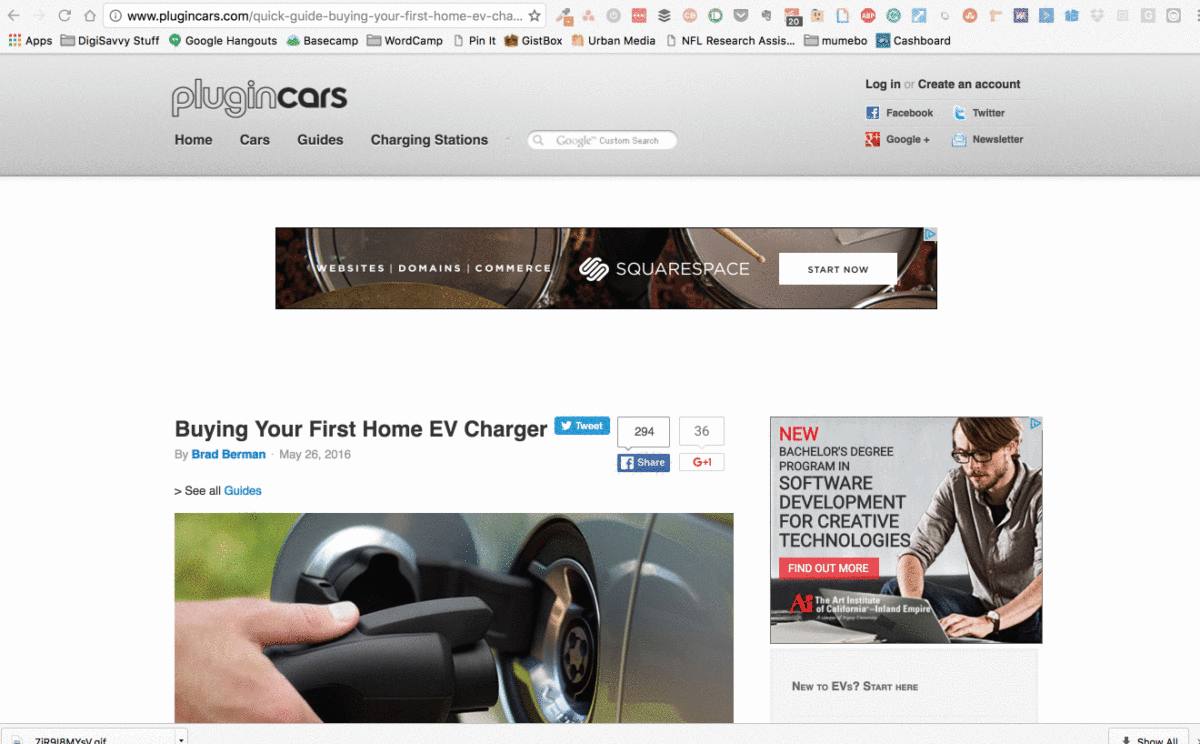[Series] Doing Research — Way of the Tortoise

This article is part of the “Way of the Tortoise” series. You can check out our other posts in this series here. Check back regularly to read our other updates.
Research. It’s not always fun, but it’s always informative. If you’re working on gaining more visibility online for your business then, research is a must.
If we stick to the basics, we can begin to put together a strategy for what content you need to create to begin getting noticed.
If I were to break this down into bite-sized chunks, I would tell you to focus on these areas:
- Research how your customers talk about your business.
- Find your top local competitors and check out what they’re doing.
- Looking for partners who compliment what you do.
- Putting together the keywords
Research how your customers talk about your business.
I was speaking to a client who sells in-home electric charging stations for electric vehicles. We were brainstorming some ideas for their pre-sales campaign. During our conversation, I was talking about a few different things, but I kept on saying a word that he focused on. Why do you keep saying Electric Car? He asked.
I told him why and he leaned back and noted You know, people who want to buy our product always say “electric car” but people in my industry, the makers and such, they say “electric vehicle.”
Needless to say, there’s a different set of lingo that industry experts use as opposed to the consumer crowd. I suggested that he engage in a survey—in-person or on the phone—and really talk to people about what their needs are, what their questions are, and what they’re questions are about electric vehicles. This is a major step in figuring out what lingo people know about your given product or service.
Your first homework assignment is:
- Talk to at least ten people who have an interest or need for the product or service you provide.
- Ask if you can record the call—this, I feel, is important to understanding and finding critical information—so that you can come back later and get the goods.
- Look for keywords and phrases. Write down questions, misconceptions, assumptions; these things will help you figure out what content you should create going forward.
Find your top local competitors and check out what they’re doing.
Alright, part of the key to a solid strategy is to understand what your competition is doing and how well they’re doing it. Specifically, we’re looking at content here. These are competitors in search to you, and they’re very likely to be local competitors, at least that is the assumption I’m working with here.
Going with the client I noted earlier, here’s what I saw on an initial glance at their site’s source code.
Above, is the meta output for this website. In short, this is the info that search engines will look at when indexing a site. Can you tell what this site is or what they do? Yeah, neither can I.
Let’s do another search. This time, I’ll search up “electric-car home charging stations.” Now, I chose that because it was a predicted result. You can see that in the animated gif below.
Above, this meta description is pulled from the third website in a Google search for “Electric Car Home Charging Stations” and while the description seems a little unfocused, it provides the right context for the desired audience. That’s a good thing and something that search engines try to pick up on.
Your homework
Using the keywords and phrases you learned while conducting your surveys, start doing searches with them! See what phrases are autocompleted and write them down. Follow those searches, enter your other keywords from research. Start writing down which websites are ranking well for those terms.
Click-thru, the various pages of their website, notice their page titles. Take note of highlighted or bolded words like these may provide insight into what keywords and phrases are valuable to them. If you’re a little savvier, also take a look at the source code and look for meta titles and meta descriptions. See what terms are being used there. Are you using them? Should you be?
Looking for partners who compliment what you do.
This part can be tricky. You have a thing you’re good at; perhaps you specialize in it. You can’t be all things to everyone. Ask yourself the following: What types of businesses are good partners for you? You’re looking for companies that help round out what you offer. If you do heating and air conditioning, then maybe general contractors are a good fit for you. Perhaps it’s commercial real estate agents. Whoever that partner is, it’s key that you figure this part out so that you can “buddy up” and hustle together. If you have a good partner, it makes for a beautiful and mutually beneficial arrangement as you pass business back and forth.
Your homework
List between three and five potential business partners for your business. Figure out the vertical and see what can be done to create a conversation to see how you might help one another. For me, I’m always looking to partner with designers who need dev help. I also partner with LMS software providers to get that sort of business as well.
Putting together the keywords
This part is hard and time-consuming. But, if you did your competitor research and customer interviews/surveys it should be a little easier.
No doubt in your research you may have found some key phrases and topics which you can use in your digital marketing efforts. Did you conduct searches with the keywords and phrases you discovered? Did you note down the top-ranked websites? Did you go to each website and inspect them for keyword usage?
If you didn’t, I’m judging you harshly and giving you the Lady Mormont death stare!!!
Your homework
You should have roughly ten or so keywords; less is okay, too—careful not to pick too many, as too many may be overwhelming to you—and write them down.
Think about each keyword or phrase as an individual topic. What could you talk about with each one? Reflect on the conversations you might have with each subject.
The point of this exercise is that you’re looking for topics to create content about. Doing so will provide your website with relevant content that search engines may find favorable. In turn, it helps your site’s visibility in the long-term.
The long term
Long-term gains are what we’re looking for here. The work you do here lays down your framework and over time it helps with your business’s ability to get new visitors and generate leads. Content is hard. It just is. It takes a lot of time for your efforts to pay dividends. But be patient and be consistent and pay attention to your website metrics to review traffic trends and other metrics.
Get Notified When We Publish New Content!
Join more than 2,500 people who get our marketing automation, business marketing, and WordPress news!







![[Series] Trying to Find Your Business’s Messaging? Start With the Parable of You.](https://digisavvy.com/wp-content/uploads/2016/04/Screen-Shot-2016-04-12-at-8.32.11-AM-768x461.png)


